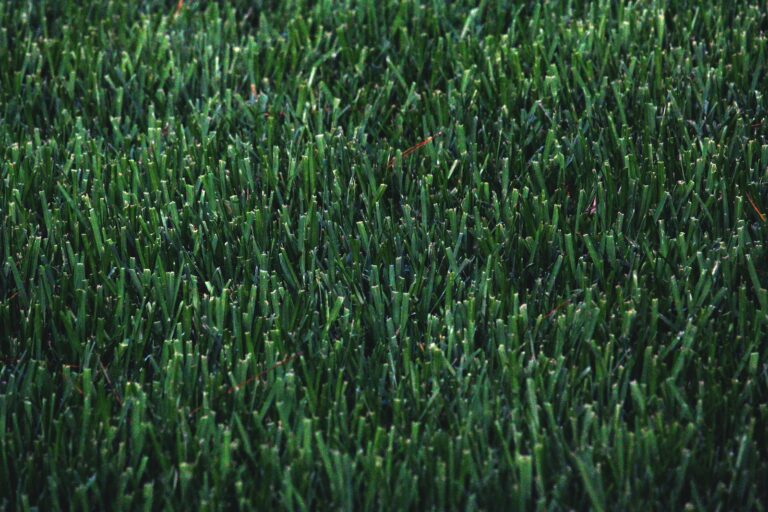How to Choose the Right Type of Aeration for Your Lawn

Have you ever noticed your lawn looking dull and lifeless despite regular watering and fertilizing? This could be a sign that your soil is lacking oxygen, which can hinder the growth of healthy grass. Fortunately, aeration is a simple solution that can help improve the health and appearance of your lawn.
But with so many different types of aerators available on the market, how do you know which one to choose? In this article, we’ll break down the different types of aerators and provide tips for selecting the right one to breathe new life into your lawn. So let’s dig in!
Introduction to Lawn Aeration
Lawn aeration is the process of perforating the soil with small holes to allow air, water and nutrients to penetrate the grass roots. Aeration can be done either manually or mechanically, and there are a variety of aerator machines available on the market. Before purchasing an aerator, it is important to consider the size of your lawn, the type of soil you have, and your budget.
If you have a small lawn, you may be able to get away with manual aeration. This can be done with a simple garden fork or an aeration spike. For larger lawns, however, mechanical aeration is generally necessary. There are two main types of mechanical aerators: plug and core. Plug aerators remove cores of soil from the lawn while core aerators simply punch holes into the ground without removing any soil.
Soil type is also an important consideration when choosing an aerator. If you have sandy soil, for example, a core aerator will likely be more effective than a plug aerator. The reverse is true for clay soils. Ultimately, the best way to determine which type of aerator is right for your lawn is to consult with a professional landscaper or turf specialist.
Benefits of Lawn Aeration
Aeration is a process of puncturing small holes in your lawn to allow air, water and nutrients to penetrate the grass roots. There are many benefits of lawn aeration, including:
-Improved root growth: The aeration process encourages deeper and healthier root growth, resulting in a stronger and more resilient lawn.
-Reduced compaction: Aeration helps to reduce compaction within the soil, making it easier for grass roots to spread and grow. This results in a thicker and lusher lawn.
-Improved drainage: The small holes created by aeration allow water to drain more efficiently from the lawn, helping to prevent waterlogging and promoting a healthy growing environment.
-Enhanced nutrient uptake: Aeration improves the ability of grass roots to absorb nutrients from the soil, leading to a healthier and more vigorous lawn.
Types of Aeration for Your Lawn
There are a few different types of aeration that you can do for your lawn. Each type has its own set of benefits and drawbacks, so it’s important to choose the right one for your needs.
Spike aeration is the most common type of aeration. It involves using a machine with spikes that puncture the soil and create small holes. This type of aeration is great for areas with dense or compacted soil. It’s also relatively quick and easy to do.
Core aeration is another popular option. This type of aeration removes small cores of soil from the lawn. It’s ideal for lawns with light or sandy soils. Core aeration can be done by hand or with a machine.
Slice seeding is a less common type of aeration. It involves making shallow slits in the lawn with a gardening tool or machine. This helps new seedlings get a foothold in the lawn and encourages root growth. Slice seeding is best for lawns that are already in good shape but just need a little boost.
Identifying the Best Lawn Aeration Method for You
If you’re looking to improve the health of your lawn, aeration may be a good option. But with so many different types of aeration systems on the market, how do you know which one is right for you?
Here’s a quick guide to help you choose the best lawn aeration method for your needs:
1] Spiking or plugging?
The two main types of aeration are spiking and plugging. Spiking involves driving metal or plastic spikes into the ground to create small holes. Plugging, on the other hand, involves removing small cores of soil from the lawn.
2] Manual or motorized?
Aeration can be performed manually or using a motorized machine. If you have a small lawn, manual aeration may be a viable option. For larger lawns, however, a motorized machine will likely be more efficient.
3] Solid or hollow tines?
Aeration machines typically have either solid or hollow tines. Hollow tines are better at removing cores of soil, while solid tines are better at creating spikes in the ground. Choose the type of tine based on your desired results.
Tips and Tricks for Effective Lawn Aeration

If you’re looking to improve the health of your lawn, aeration is a great place to start. But with all the different types of aeration out there, how do you know which one is right for your lawn? Here are some tips and tricks to help you choose the right type of aeration for your lawn:
1] Know your soil type. This is important because different soil types require different aeration methods. For example, sandy soils can’t handle much foot traffic, so plug Aeration would be the best method for those lawns.
2] Consider the size of your lawn. If you have a small lawn, a manual hand aerator may be all you need. But if you have a large lawn, you’ll need something more powerful like a gas-powered or riding aerator.
3] Determine how often you need to aerate. This depends on things like the amount of foot traffic on your lawn and the type of soil you have. If you have heavy clay soils, you may need to aerate more often than someone with sandy soils.
4] Choose an aeration method that fits your budget and needs. There are many different types of aerators out there, so make sure to do your research before making a purchase.
5] Use the right aeration tool for the job. Different soil types require different tools, so make sure you’re using the correct tool for your lawn.
6] Water your lawn before and after aerating. This will help ensure that your new holes don’t fill up with mud or debris and also help get beneficial nutrients to your roots more quickly.
7] Be patient. Aeration can take a few weeks to show results, so be sure to stick with it and give your lawn time to improve.
Cost Considerations for Different Types of Lawn Aeration
There are three primary types of lawn aeration – mechanical, manual, and core. Each has its own set of pros and cons that should be considered when making a decision on which type is right for your lawn.
Mechanical aeration is the most expensive option, but it is also the most effective. It involves using a machine to punch holes in the soil and pull out cores of earth. This type of aeration is best suited for large lawns that require a lot of work.
Manual aeration is less expensive than mechanical aeration, but it is also less effective. It involves using a hand tool to poke holes in the soil and pull out cores of earth. This type of aeration is best suited for small lawns that do not require a lot of work.
Core aeration is the least expensive option, but it is also the least effective. It involves leaving cores of earth in the ground to decompose over time. This type of aeration is best suited for lawns that do not require immediate results.
Maintenance Tips When Using Lawn Aeration Equipment

Lawn aeration is a great way to promote healthy growth in your lawn. However, it is important to follow proper maintenance procedures when using lawn aeration equipment. Here are some tips to help you keep your equipment in good condition:
1] Read the manufacturer’s instructions carefully before using the aerator. This will ensure that you are using the equipment correctly and safely.
2] Inspect the blades of the aerator before each use. Make sure that they are sharp and free of damage.
3] After using the aerator, clean it thoroughly with soap and water. This will remove any dirt or debris that could cause problems during storage.
4] Store the aerator in a dry, protected place when not in use. This will prevent rust or other damage from occurring.
5] Ensure that the aerator’s engine is kept lubricated and free of dirt and debris. This will prolong the life of the engine.
6] Check the air pressure in the aerator tubes regularly. This will ensure that they are operating at optimal levels.
7] Keep all nuts, bolts, and moving parts tight and secure. This will prevent accidents or injuries.
Proper maintenance of your lawn aeration equipment is necessary to ensure that it operates correctly and safely. Follow these tips to keep your equipment in good condition for many seasons of use!
Conclusion
Aeration can be a great way to improve your lawn and make it look its best. From vertical mowing to core aeration, there are many different types of aeration that you can choose from depending on what kind of results you want for your lawn. Make sure to research each type carefully so that you know which one will give you the best outcome. If you take the time to find the right type of aeration for your lawn, then it will show in the beautiful results!

James is a passionate writer and gardener with years of experience in home gardening. He is the author of several articles and blog posts on HomeGardenBlog.com, a platform where he shares his expertise and love for plants and gardening with the world.







